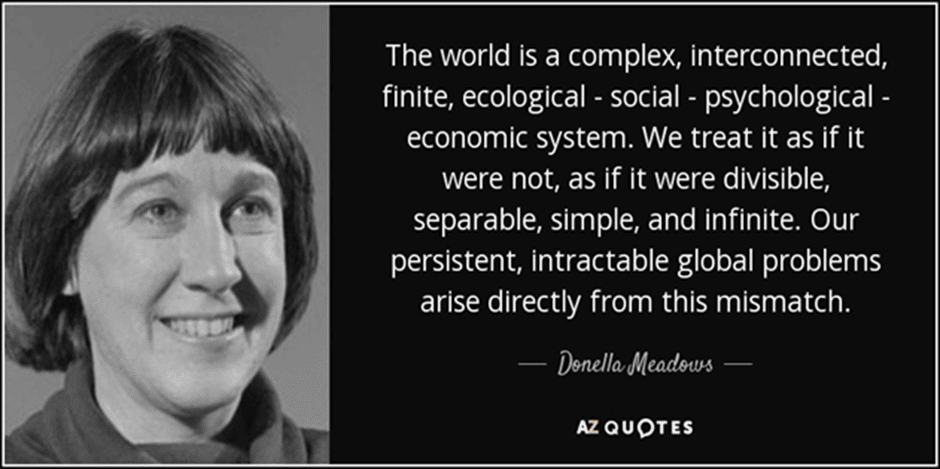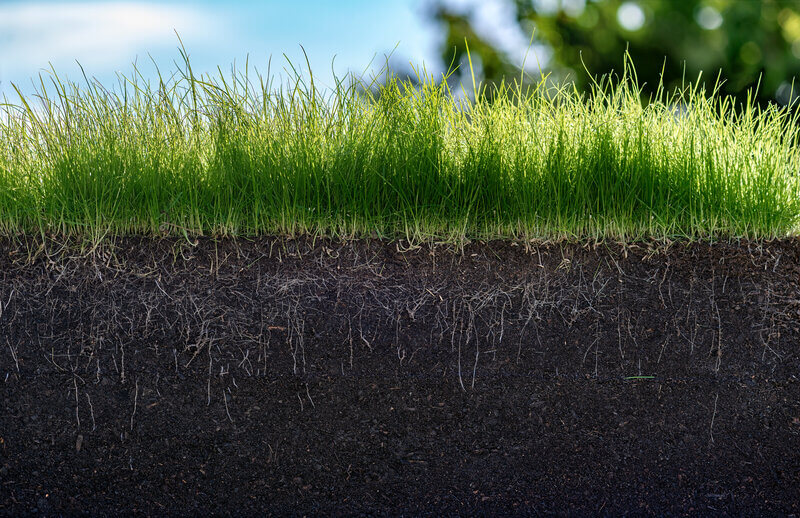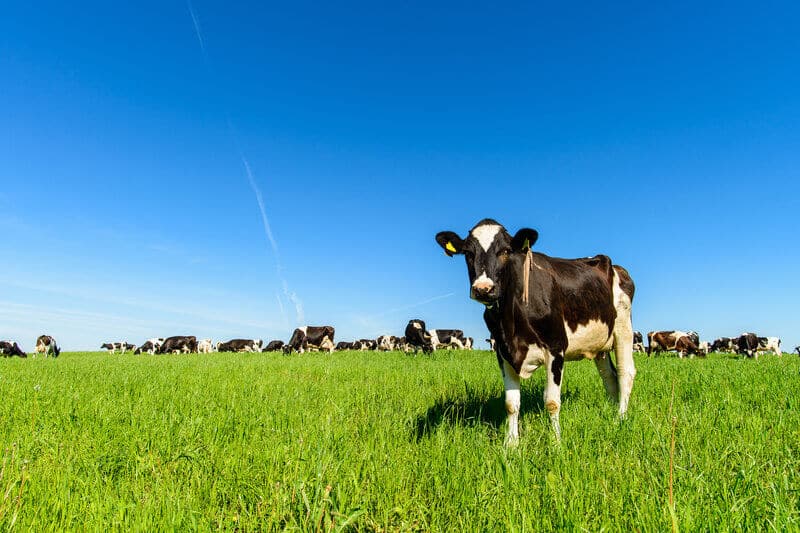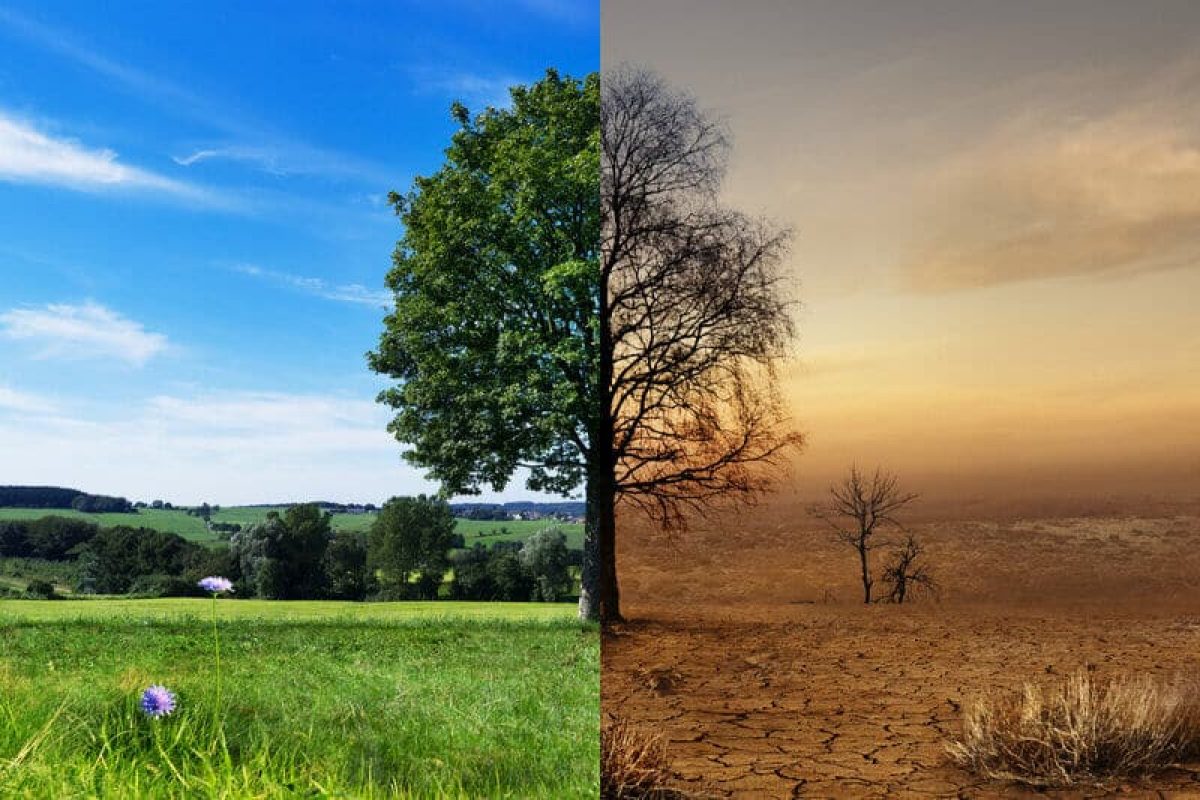The impact of ‘conventional’ agriculture
Many of the management practices which have become part of modern, conventional agriculture work against the inherent health of soils and extract life from them. The connections which have been created over millennia, are disrupted and broken creating disconnection and separation; segregating rather than connecting.
In our drive to understand and control we pull things apart into disconnected parts and science and research has become specialised around these parts generally with a view to commercial exploitation. The more specialised we become, the more we are disconnected from the whole. When the focus is to drive agriculture like a machine for production at all costs it comes with unintended consequences.
Living systems – a mix of indigenous wisdom and science
Humberto Maturana and Francisco Varela from the ‘Santiago School’ in Chile set to define life by adopting an holistic approach to define and replicate all the functions of a living cell.
What they found was that life is not located in any one part of the cell but distributed throughout with all parts interdependent and equally important to the functioning of the cell. If the connections between the parts are broken the cell dies.
- Self-Regenerative ability is not located in any one place, it is nodal or decentralised
- Life is dependent on the interconnected relationships of all parts
- Life is a holistic (emergent) property of all “parts” and relationships between the parts
- Each “part” is also a self-regenerative (autopoietic) system as one whole is made up of several other wholes within it, each able to regenerate themselves
Only living systems have the capacity to self-maintain and self-regenerate, Regenerative is living.
The consequences of degenerative farming practices
Conventional agriculture relies on practices which work against the health of the system. These degenerative, industrial practices have depleted the soil of life, rendering it unable to support growing plants. The consequence is that farmers are required to increasingly rely on inputs.
These inputs are generally of a synthetic and toxic nature and further affect life in the soils creating a downward spiral of health and increasing costs.
Many scientific agencies around the world now acknowledge the degenerative impact farming has had and highlight that soils are running out – they are a finite resource that we can’t just mine without consequence.

When I measure the consequence of this approach on ecological health using Ecological Outcome Verification it becomes clear that this approach is degenerative. It is constantly eroding the health of the land. Common examples include:
Overgrazing – all the energy required to sustain life comes from the photosynthetic process, conventional grazing management maintains grass very short over much of our land base reducing the energy flow from the sun through to the soil by photosynthesis. This shows up as compacted soils, little life in the soils and shallow root depth.
Bare ground – having ground bare to the sun by not having forage or litter cover over the entire surface. Bare soil losses water and carbon reducing its ability to support life
Farming of monocrops – Diversity below and above ground is a key to natural health and resilience.
Tillage, sprays, and fertilisers – damage the delicate infrastructure and interconnections of life in the soil and foster this concept of control over life
Shifting from degeneration to regeneration
The shift from degeneration to regeneration is a shift from the mechanistic paradigm to a living systems paradigm.
There is no simple definition of regenerative and no prescription or silver bullet that makes you regenerative.
Are your actions and behaviours creating outcomes that are net regenerative or net degenerative? Is our land getting better or worse, is there more water in our soils, are our waterways cleaning, are our people happier and healthier?
When farmers begin to look at soil as an asset and not just the material that plants grow in, that small shift in mindset has a huge capacity for change.
Regenerative agriculture is a promising and sustainable solution to a flourishing future, but it is not only up to farmers to create this shift. The agriculture workforce needs support from the agricultural industry, the consuming public, retailers, educators, and governments.

The regenerative approach
By applying these principles learned from living systems to the design of our systems, be that of ourselves and families, farms, businesses, organisations, communities, and government, we create the conditions within those systems which deliver health to all parts and all members.
This is the paradigm shift from mechanistic where the focus is on maximum extraction at all costs, to regenerative that provides health and resilience to all.
We have become so disconnected from nature we believe it has no capacity to serve us other than as a medium in which we can grow heavily supported by inputs. We have normalised farming practices that work against the very conditions we need to live.
Moving from a mechanistic paradigm to a living systems paradigm requires shifts in thinking and behaviour which put the principles of living systems at the heart of decision-making:
- Holistic – regeneration and life can only be understood and achieved when considering the system as a whole. If we don’t understand and define the whole, we are working with we cannot effectively make decisions that benefit the whole and all its parts. We create outcomes that may be beneficial in part but damaging to the whole. In creating a context, it is important to define the whole we are managing
- Interdependent – regeneration, resilience and abundance emerge from the diversity of interdependent relationships of all parts. The interconnection between the wide diversity of life below and above ground creates an amazing infrastructure that allows the parts to work together to overcome challenges and provide resilience. When this infrastructure is broken in our soils through physical or chemical applications the interconnections are broken and parts die. As in all living systems disconnection leads to the death of the system
- Uniqueness – each living system and every part of the system is unique and contributes to the health of the system
- Evolutionary – responds to and creates change in the external environment. As conditions around our whole change, we need to adapt to these changing conditions and evolve. Similarly changes we make within our whole, for example, the way we manage, and graze livestock will impact the environment around us
- Nodal – decentralised and distributed with no command or control centre. Conventional management assumes we better understand the methods to improve productivity in land and animals than nature and we impose controls and force outcomes at the expense of natural health
- Developmental – create the conditions for the health of the parts to support health across the entire system
Applying these principles to agriculture

Image source.
- Make decisions specific to your context. The context helps define the whole as it relates to your farming business. When you define what health looks like for this whole you can make decisions that add to the health of this whole not detract from it.
- How can you minimise soil disturbance? Remember every time we disturb soils, we damage the critical infrastructure and diversity that sustains health. Is there a way we can shift to practices that disturb soils less?
- Diversity. Nature does not work in monocultures. Diversity creates resilience and supports greater soil and land health and productivity. How can we improve diversity within the farming operation; diversity of plants will enhance diversity in soils
- Bare soil is the biggest contributor to degenerative outcomes. What farming practices can be changed to reduce the quantity of bare soil?
- Maintain a living root in the ground. As plants develop and roots grow and the whole infrastructure of biological activity forms around that root. Each time plants are removed this infrastructure is damaged and we must start again. How can we build on the progress we have made without having to go back to square 1?
- The integration of animals into the land base and the way these are managed is the most powerful tool we have in regenerating our land.
These are not a recipe or a set of instructions but a set of principles we can apply to help change habits from those based on practices that have been in the net degenerative to regenerative.
These principles will help create conditions for regenerative outcomes.

So, what is a regenerative future?
“A living, evolving and naturally functioning environment where abundance and resilience are recurring outcomes of its underlying health.”
More farmers around the globe are making the shift from conventional agricultural practices to regenerative agricultural practices as we learn more about the potential degenerative impacts that conventional farming has on our environment.
Our communities and farmlands have the potential to thrive. That’s why we work with farmers to help with regenerative adoption and implementation and can help you to transition to a regenerative future.
There is no pre-qualification required, no pre-conditions for entry and no pressure to achieve beyond the level of your own progress, just a genuine desire to change towards a system that can deliver health to the planet and people and secure a long-term future for humanity on earth.
Regenerative is a movement, that is transforming farming, agriculture, communities, business, and organisations.
Ata Regenerative are at the forefront of regenerative agriculture practice in New Zealand. With 17 years working in the regenerative space and as the Savory Hub for NZ, Ata Regenerative is the only certified Ecological Outcome Verification provider in New Zealand. Ata Regenerative can assist with your transition to farm practice that focuses on the regeneration of soils, increased productivity, and biological diversity, as well as economic and social well-being. To find out more, contact us here.


